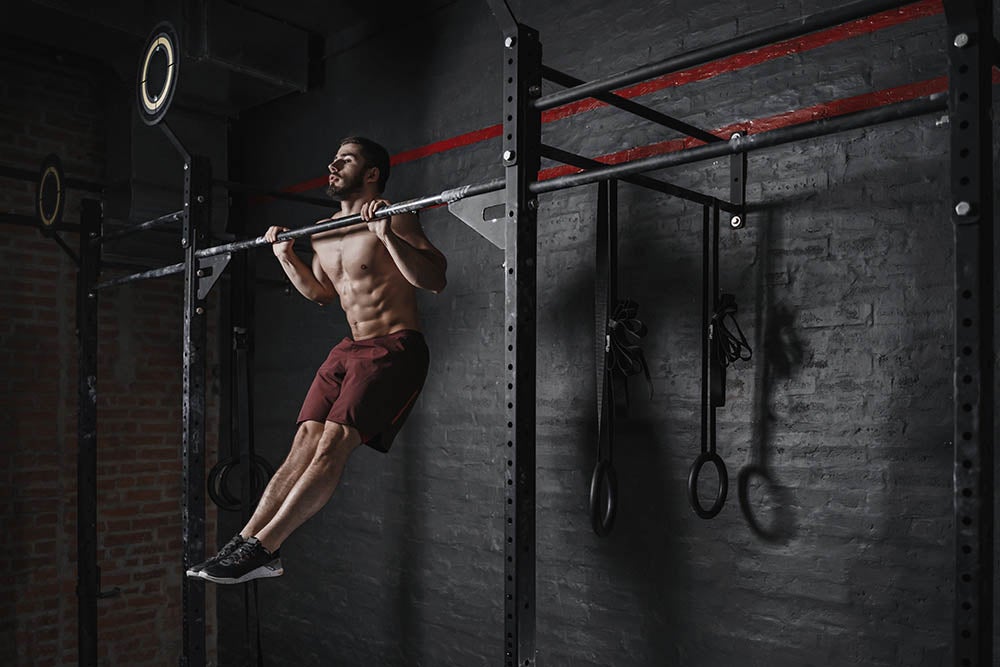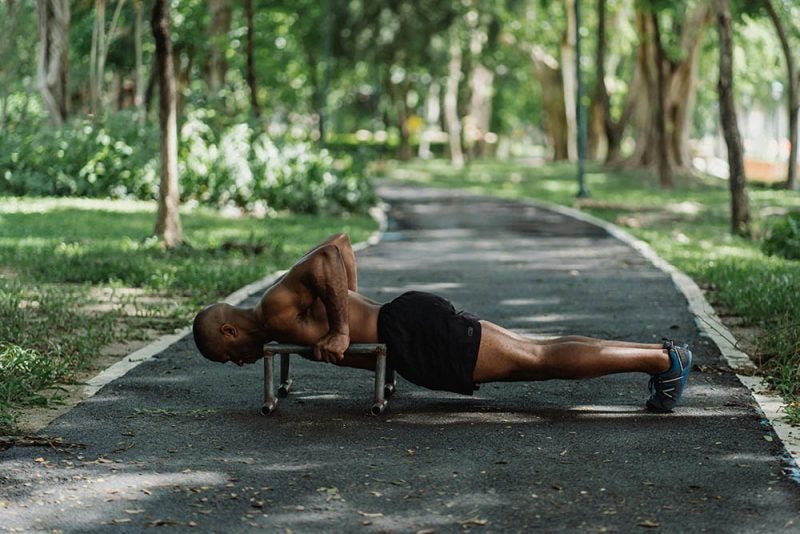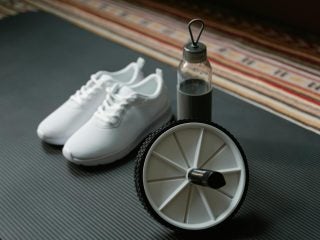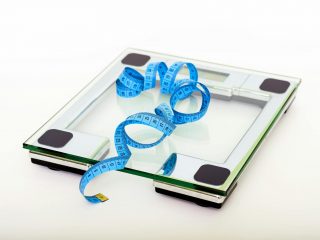Calisthenics may sound like a complicated fitness trend, but it’s one of the most accessible and effective ways to get stronger and fitter.
You don’t need fancy gym memberships or complicated equipment. Instead, calisthenics relies on something we all have—our own body weight. It’s as simple as that.
Whether you’ve seen people in the park doing pull-ups or watched videos of someone holding themselves in a perfect plank, that’s calisthenics in action. This guide will walk you through everything you need to know to get started, even if you’re a complete beginner.
What Is Calisthenics?
Calisthenics is a type of exercise that uses your body weight to build strength, endurance, and flexibility. It’s rooted in natural movements like pushing, pulling, squatting, and holding positions—think of it as the foundation of many of the exercises we know today. The word itself comes from the Greek words “Kalos” (beauty) and “Sthenos” (strength), and the goal is to develop both in balance.
This workout style doesn’t require weights or machines, which makes it incredibly versatile. You can practice calisthenics in the gym, at home, or even at the park.
Why Do Calisthenics?
If you’re wondering why you should try calisthenics instead of lifting weights or doing cardio, here’s what makes it stand out:
- No Equipment Needed
Calisthenics is all about simplicity. You don’t need expensive equipment, just your body and some space. Whether you’re in your living room or outdoors, you can start immediately.
- Build Functional Strength
Calisthenics focuses on natural body movements, which translates into practical strength you’ll use every day. Whether it’s lifting groceries or climbing stairs, you’ll be building real-world strength that’s helpful outside the gym.
- Work Out Anywhere, Anytime
Since calisthenics doesn’t require equipment, you can exercise anytime and anywhere. Whether you’re on a work break or at home, you can fit in a few sets of push-ups or squats without much hassle.
- Lean, Strong Muscle
Calisthenics will help you develop a lean and defined physique. If you’re looking to build a body that’s both strong and agile—without bulking up excessively—this is the way to go.
How Does Calisthenics Work?
Calisthenics works by using bodyweight resistance to perform different exercises. You become your own gym. The key moves are simple but effective, focusing on core body motions like pushing and pulling. Here are a few basic calisthenics exercises:
- Push-ups: A staple for upper-body strength, focusing on the chest, shoulders, and triceps.
- Squats: A powerful exercise for working your legs and glutes.
- Pull-ups: A challenging yet rewarding way to build upper body strength, particularly in the back and arms.
- Planks: A great core exercise that will build endurance and improve stability.
These movements are perfect for beginners and can be adjusted for any fitness level. For example, if regular push-ups are too difficult, you can start with incline push-ups, placing your hands on a bench or chair to reduce resistance.
Can You Build Muscle with Calisthenics?
Absolutely! Calisthenics builds muscle, just in a slightly different way than lifting weights. While you won’t bulk up like a bodybuilder, you’ll develop lean muscle and functional strength that translates into better movement and control of your own body.
Progression is key in calisthenics. Once you master a basic exercise, you can challenge yourself with more difficult variations. For example:
- Start with regular push-ups, then move on to decline push-ups (with your feet elevated) to increase the difficulty.
- Once bodyweight squats become easy, try pistol squats, a more advanced one-legged version that requires extra balance and strength.
By continuously challenging your body, you’ll see steady muscle growth and strength gains over time.
Is Calisthenics Good for Weight Loss?
If you’re looking to lose weight, calisthenics is an excellent option. Because many calisthenics exercises involve multiple muscle groups at once, they help burn a lot of calories in a short amount of time. Additionally, exercises like squats, lunges, and push-ups can be done in a circuit format—moving quickly from one exercise to the next to keep your heart rate up, making it a great form of cardiovascular training.
By increasing your calorie burn and building lean muscle, calisthenics can help with sustainable weight loss. Plus, you’ll be toning and sculpting your body along the way.
Calisthenics vs. Weight Training
You might be wondering, how does calisthenics stack up against traditional weightlifting? Both methods have their benefits:
- Calisthenics focuses on full-body movements and is great for building functional, natural strength. It’s perfect if you want to develop control and endurance using your body as the primary tool.
- Weightlifting allows you to target specific muscle groups for hypertrophy (muscle growth). If you’re looking to isolate muscles or focus on specific areas, weightlifting can help you achieve those goals faster.
In short, calisthenics is ideal for people who want a versatile, low-equipment workout that builds real-world strength, while weightlifting is more focused on muscle isolation and size.
Getting Started with Calisthenics
Starting with calisthenics is easy. You don’t need to walk into the gym knowing how to perform advanced movements like the human flag (save that for later). Focus on mastering the basics first:
- Push-ups: Start with incline push-ups if needed, and work your way down to regular push-ups.
- Squats: Practice bodyweight squats to build lower body strength.
- Planks: Work on your core endurance with planks, starting with 20 to 30 seconds and increasing over time.
Once you feel comfortable, you can increase the difficulty by adding reps, changing angles, or trying more advanced variations. The beauty of calisthenics is that as you improve, there’s always a new challenge around the corner.
Do You Need Equipment for Calisthenics?
One of the biggest perks of calisthenics is that you don’t need much equipment. Your body is your gym. However, if you want to mix things up, a few simple tools can help you diversify your workout:
- Pull-up Bar: Perfect for practicing pull-ups and hanging exercises.
- Parallel Bars: Great for dips and working on balance.
- Resistance Bands: Useful for adding resistance or assisting with exercises like pull-ups.
These tools aren’t necessary to get started but can be helpful as you progress.
Ready to Get Started?
Calisthenics is a simple, effective way to build strength, burn fat, and improve overall fitness—without needing a gym or fancy gear. Whether you’re a complete beginner or just looking to mix up your routine, calisthenics offers a full-body workout that you can do anywhere.
Ready to get started? All you need is your body and a bit of motivation. If you want to explore more exercises and variations, check out this comprehensive list of calisthenics exercises to take your training to the next level.
Calisthenics is about mastering your own body, building functional strength, and improving flexibility and endurance. You don’t need expensive equipment or a gym membership to get started—just your body and a little space. With consistency and dedication, you’ll be amazed at how quickly you can progress and how strong you can become.


















